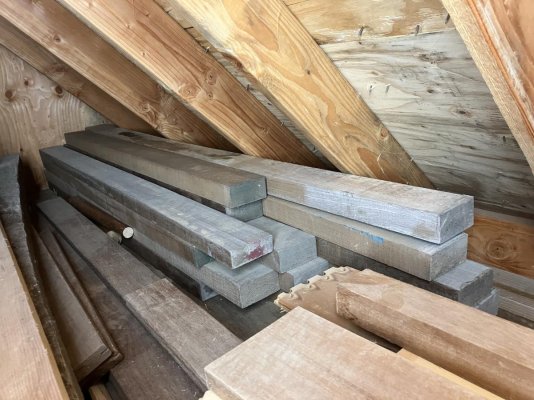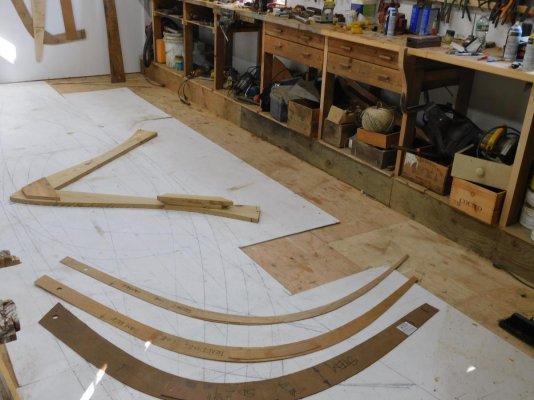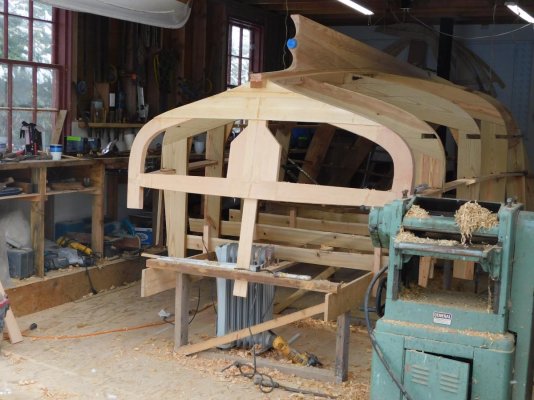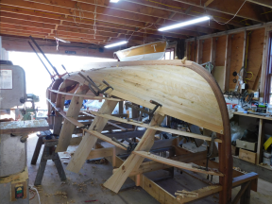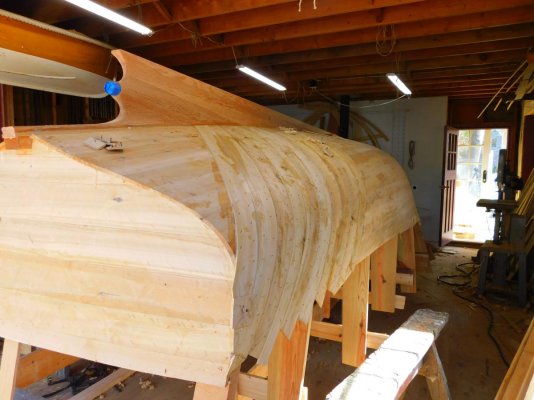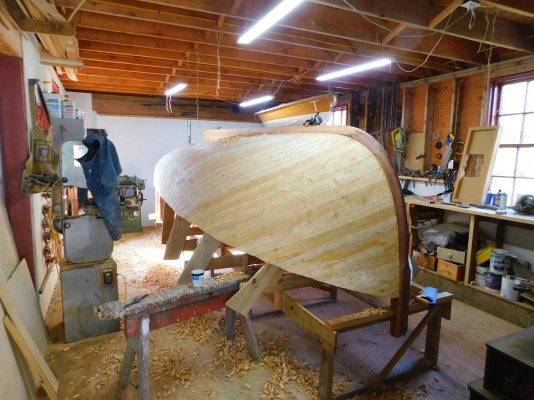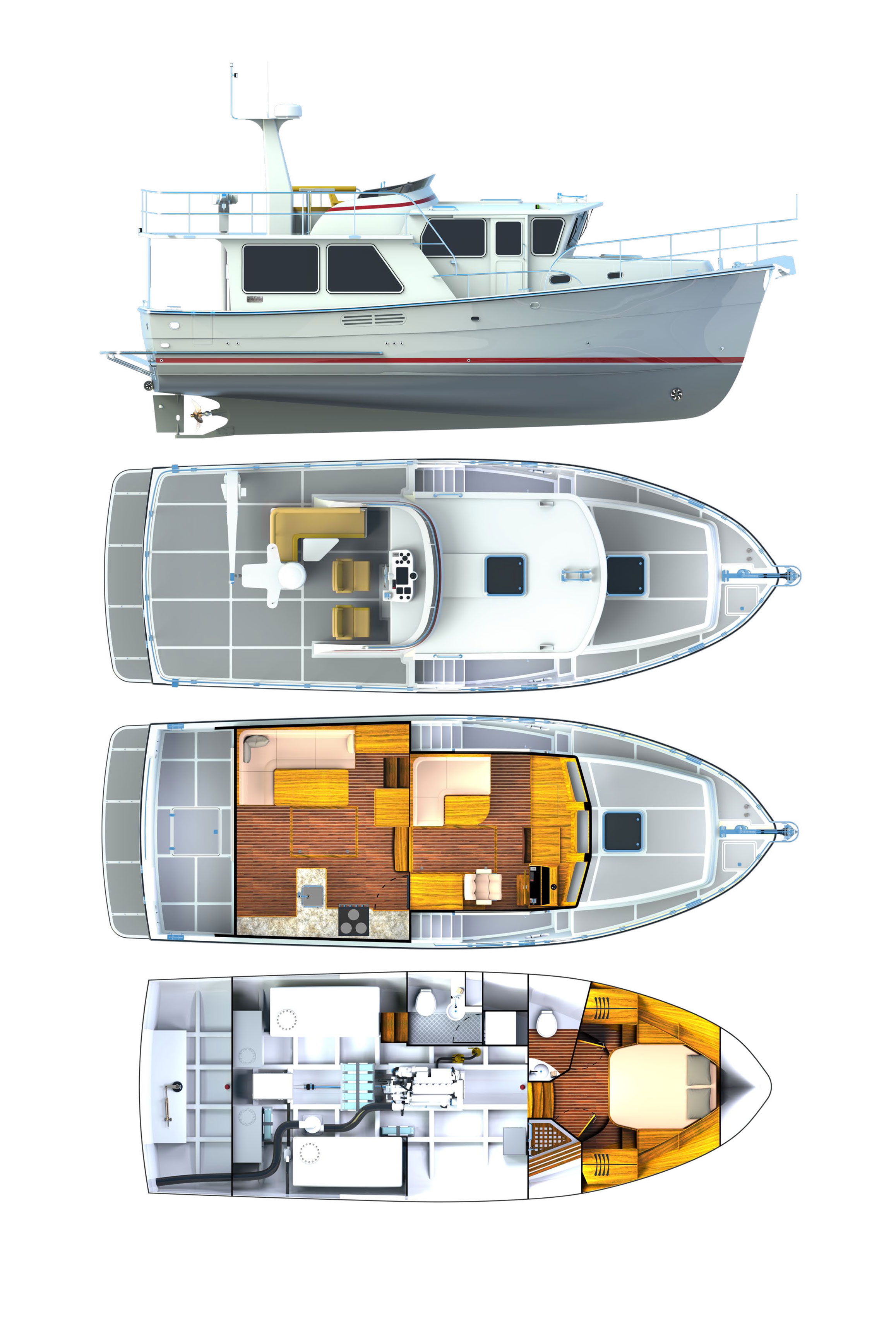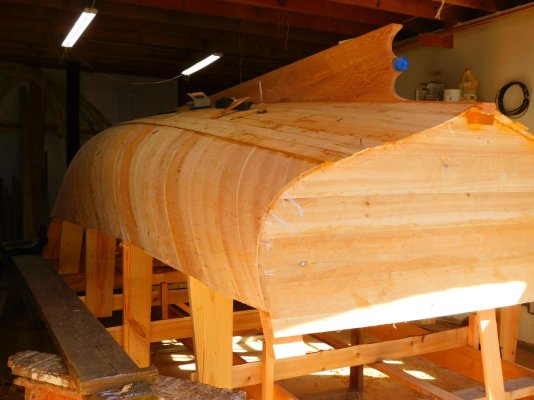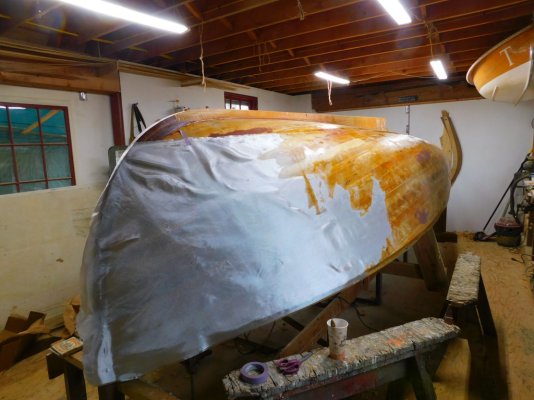12/25/2023 Update
I spoke with Paul yesterday who confirmed he has the required wood to start the boat. I'm surprised and pleased how quickly he was able to locate the different types of woods in different states before driving and picking them up himself. While we are still looking for some mahogany it is not required for a couple of months. The stern tube is expected to be completed by a supplier and ready for Paul to pick up next week. After the holidays focus will turn to lofting and making the templates required to start building the boat.
While I did a reasonably good job documenting the build process of the rowing / tender by another builder, this boat is different in design and construction which I look forward to learning about for our next potential new build.
Designing the canvas tops for this boat has taken on a life of its own balancing "must haves" by Maria while keeping the look of the boat traditional and yachty.
I'm constantly searching the web for different approaches but still have work to do. Fun stuff.
John
I spoke with Paul yesterday who confirmed he has the required wood to start the boat. I'm surprised and pleased how quickly he was able to locate the different types of woods in different states before driving and picking them up himself. While we are still looking for some mahogany it is not required for a couple of months. The stern tube is expected to be completed by a supplier and ready for Paul to pick up next week. After the holidays focus will turn to lofting and making the templates required to start building the boat.
While I did a reasonably good job documenting the build process of the rowing / tender by another builder, this boat is different in design and construction which I look forward to learning about for our next potential new build.
Designing the canvas tops for this boat has taken on a life of its own balancing "must haves" by Maria while keeping the look of the boat traditional and yachty.
I'm constantly searching the web for different approaches but still have work to do. Fun stuff.
John

